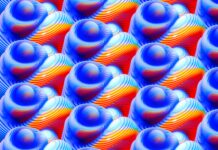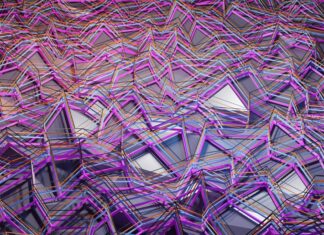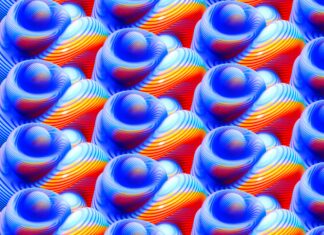Graph embedding is a pivotal technique in the field of network analysis and machine learning, which aims to transform graph-structured data into low-dimensional vector representations while preserving essential information about the graph’s structure and node attributes. This enables the application of traditional machine learning algorithms on graph data, allowing tasks such as node classification, link prediction, and graph clustering to be performed more effectively.
Graph embedding methods have gained substantial attention due to their potential to tackle real-world problems across various domains, including social networks, biological networks, recommendation systems, and more. By capturing the underlying patterns and relationships in graph data, these techniques enable the translation of complex graph information into a form that is compatible with traditional machine learning models. Here are ten key points to understand about graph embedding:
1. High-Dimensional Graphs to Low-Dimensional Vectors: Graphs are complex structures with nodes and edges, often resulting in high-dimensional data. Graph embedding reduces this complexity by mapping nodes into low-dimensional continuous vector spaces, where distances between nodes reflect their structural or semantic relationships.
2. Node Similarity Preservation: A crucial objective of graph embedding is to ensure that nodes that are structurally similar in the original graph remain close to each other in the embedding space. This allows for the preservation of the graph’s inherent structure.
3. Different Embedding Techniques: Several graph embedding techniques exist, broadly categorized as either unsupervised or supervised methods. Unsupervised methods, like DeepWalk and Node2Vec, focus on capturing neighborhood information, while supervised methods, like GraphSAGE and GAT, incorporate label information for improved embeddings.
4. Random Walk-Based Approaches: Methods such as DeepWalk and Node2Vec use random walks to generate node sequences, which are then used to train word embedding models like Word2Vec. This approach captures local proximity in the graph by treating nodes as words and neighborhoods as contexts.
5. Spectral Approaches: Spectral embedding techniques, including Laplacian Eigenmaps and Graph Convolutional Networks (GCNs), leverage graph Laplacian eigenvalues and eigenvectors to embed nodes in a lower-dimensional space. GCNs extend traditional convolutional neural networks to graph-structured data.
6. Node Attributes and Structural Information: Many real-world networks have associated node attributes (e.g., features, text) and structural information (e.g., connectivity patterns). Effective graph embedding methods balance the integration of both types of information to generate meaningful embeddings.
7. Applications: Graph embedding finds applications in various domains, including social network analysis, recommendation systems, bioinformatics, fraud detection, and more. For instance, in recommendation systems, graph embeddings can capture user-item interactions for personalized recommendations.
8. Evaluation Metrics: Evaluating the quality of graph embeddings is non-trivial due to the absence of ground truth embeddings. Instead, downstream tasks like node classification and link prediction are used as proxies to assess the effectiveness of embeddings.
9. Challenges: Despite their successes, graph embedding methods face challenges like scalability to large graphs, handling heterogeneous data, capturing multi-scale information, and handling dynamic graphs that evolve over time.
10. Future Directions: Ongoing research aims to develop more robust and interpretable graph embedding techniques. This involves addressing challenges related to dynamic graphs, heterogeneous data, incorporating domain knowledge, and designing methods that can capture complex hierarchical structures present in many real-world networks.
Graph embedding stands as a transformative technique that bridges the gap between the intricate nature of graph-structured data and the powerful capabilities of traditional machine learning algorithms. By distilling complex graphs into low-dimensional vectors while retaining crucial structural and attribute-based information, graph embedding enables a range of applications across diverse domains. This technology’s ability to uncover hidden patterns, relationships, and insights within networks has led to breakthroughs in social network analysis, recommendation systems, bioinformatics, and beyond.
The versatility of graph embedding techniques, which encompass both unsupervised and supervised methods, underscores their adaptability to various data types and learning objectives. Random walk-based approaches like DeepWalk and Node2Vec harness local proximity to generate embeddings, while spectral methods such as GCNs exploit eigenvalues and eigenvectors to capture structural information. The integration of node attributes and the handling of dynamic, heterogeneous, and large-scale graphs present both challenges and opportunities for innovation.
As research continues, the field of graph embedding is poised to evolve. Future directions encompass enhancing scalability, addressing complex hierarchical structures, and incorporating domain knowledge. The quest for improved interpretability and the development of techniques that can effectively navigate dynamic and evolving graphs remain active areas of exploration. By pushing the boundaries of graph embedding, researchers aim to unlock even deeper insights from complex networks, advancing our understanding of interconnected systems and facilitating more accurate and informed decision-making across various sectors.
Moreover, the success of graph embedding hinges on its capacity to navigate the intricate interplay between node relationships and attributes. As networks become increasingly heterogeneous and dynamic, the demand for embedding methods that can accommodate these complexities becomes more pronounced. Finding innovative ways to seamlessly incorporate various data modalities, such as textual information, image data, and temporal dynamics, is a central challenge that researchers are dedicated to overcoming.
The evaluation of graph embedding methods is an ongoing endeavor, often relying on downstream tasks to gauge the quality of generated embeddings. These tasks, such as node classification and link prediction, serve as valuable proxies for assessing the effectiveness of embeddings in capturing meaningful graph structures. This indirect evaluation approach underscores the interdependence between embedding quality and the performance of applications that rely on the extracted information.
In the rapidly evolving landscape of machine learning and network analysis, the role of graph embedding is poised to become even more pivotal. With the fusion of graph embedding techniques with emerging technologies like graph neural networks and reinforcement learning, the potential for uncovering intricate patterns and predictive insights within complex networks is bound to expand. This amalgamation of methodologies can pave the way for revolutionary advancements in personalized recommendation systems, disease detection, social influence analysis, and many other fields where network data plays a critical role.
In essence, graph embedding serves as a bridge between the structural richness of graph data and the algorithmic power of machine learning. By distilling complex networks into compact and informative representations, it empowers practitioners to wield established machine learning tools to extract knowledge from data that was once considered unwieldy. As we delve deeper into the realm of interconnected data, graph embedding stands as a beacon of understanding, illuminating the intricate relationships that underlie our increasingly interconnected world.
In summary, graph embedding plays a pivotal role in translating intricate graph-structured data into a format that can be seamlessly integrated with traditional machine learning techniques. By preserving node relationships, incorporating node attributes, and enabling various downstream applications, graph embedding has become an essential tool in unlocking the latent information contained within networks, fostering advancements across multiple domains.























